

Air Zimbabwe, Aviation, Airliners, Airlines of Africa Encyclopedia

 Air Zimbabwe Airbus A320 Z-WPN. MORE TO SEE - PLEASE SCROLL DOWN TO 2018!
Air Zimbabwe Airbus A320 Z-WPN. MORE TO SEE - PLEASE SCROLL DOWN TO 2018!

An Air Zimbabwe Boeing 767-200, famously known as Chimanimani, recently completed a remarkable mission, flying under the call sign FSK150, to transport injured soldiers from South Africa, Tanzania, and Malawi back home from Kigali, Rwanda. These soldiers had been serving in the Democratic Republic of Congo (DRC) before being injured in ongoing military operations.
The flight, a unique charter operation leased to Mont Gabaon Airlines, acted as a "Shuttle Ambulance Service" to transport the wounded soldiers to their respective countries.The soldiers were first moved from Goma to Kigali, as Goma is a "no-go area for planes. The aircraft, which departed from Kigali, made several stops to drop off the soldiers at their home countries, beginning with Tanzania.

Air Zimbabwe has struggled against headwinds in recent years. It has been promised that the airline would acquire modern aircraft. The absolute worst deal came with Malaysia Airlines and two Boeing 777s that were flown to Harare and never entered service.
On Flight 24 there is only information that only one Boeing 737 is in service. The status of the two ERJ-145 is for the time being not known.
One of the two Boeing 767s has undergone a service and is now leased to Mont Gabaon Airlines. The two Boeing 777 aircraft that have been tricked have also not been taken into service.
The carrier has also not been able to resolve the dispute regarding the ownership of the Airbus A320 and the two MA-60.
This disclosure has raised serious concerns about transparency and oversight within the national carrier. “Efforts are being made to trace the ownership of the aircraft and ensure all records are updated accordingly.

This admission has sparked alarm among parliamentary members and the public, highlighting potential governance and operational issues within the airline. The lack of transparency could have significant implications for the management and operational efficiency of Air Zimbabwe, as well as for its financial accountability. As the investigation unfolds, stakeholders are keenly watching for further developments, hoping for swift resolution and increased accountability within Air Zimbabwe’s operations.


The cash strapped Air Zimbabwe were forced to ground its long-haul planes, which are more expensive to maintain, after discontinuing its London and Shanghai flights.
In order to save the airline from a total bankruptcy, Air Zimbabwe has leased out one of its two long haul Boeing 767 aircraft to Mont Gabaon Airlines of the Democratic Republic Congo. The aircraft is on a long lease to Mont Gabaon Airlines.”
The aircraft, which had been parked in Harare for two years, flew to the DRC second city of Goma on May 4 where it was repainted.

The aircraft sent to the DRC is Z-WPF which made its first flight in September 1990. It’s new DRC owners have left its name, Chimanimani, in place on the right side of the cockpit. With a historic foreign debt of over US$30 million, Air Zimbabwe has been unsuccessful in trying to court a foreign partner.
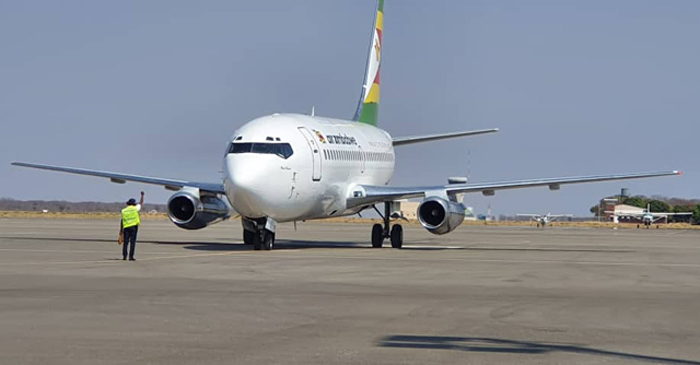

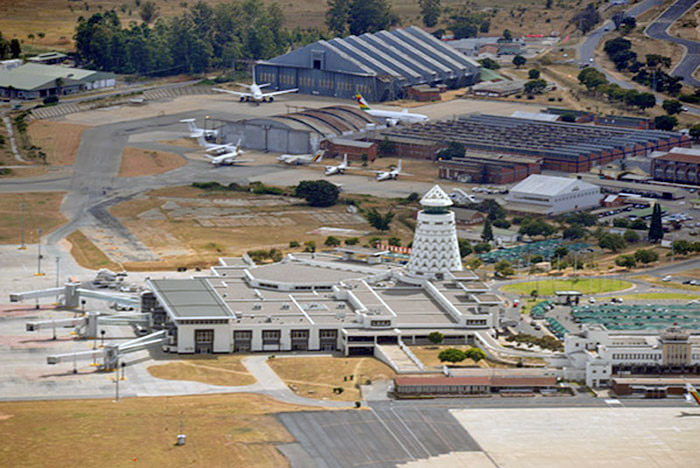


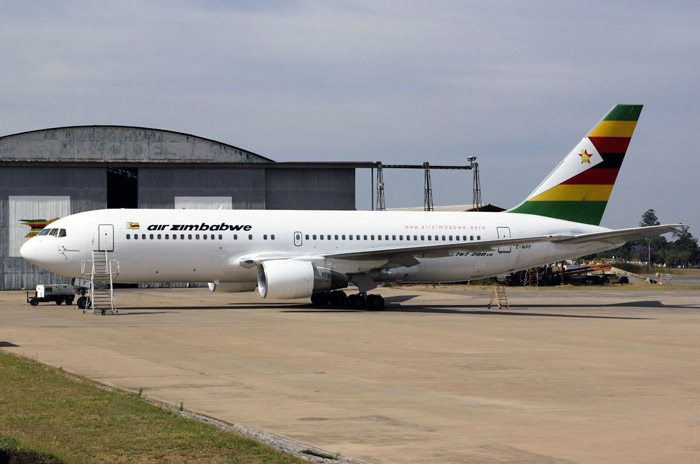
AirZimbabwe’s oversized, uneconomical and aged Boeing 767-2NO Z-WPF "Chimanimani´s" destiny is not known but will probably operate on longhaule routes in the future.
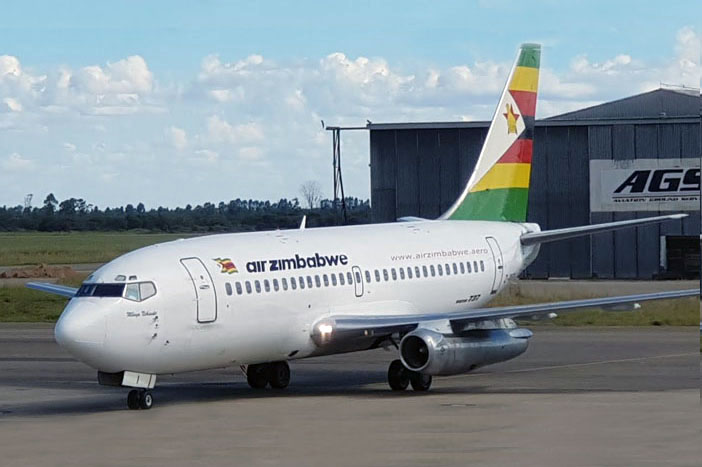
What had Air Zimbabwe to do without its only airworthy 737-200 Z-WPA. From the beginning in 1986/87 "They" were the "Triplets" WPA, Mbuya Nehanda, WPB, Great Zimbabwe and WPC Matojeni . WPB and Z-WPC are stored probably both at Harare even if Z-WPB was logged last VFA/BUQ to Bulawayo.
However, the aircraft that was delivered brand new to Air Zimbabwe in 1986 was slowed down by an expensive and lengthy D-Check. The airline's engineers and mechanics apparently used the corona lockdown phase productively. As local media report, they made the Z-WPA fit again with great effort over months of work.
Then she is said to have taken off in Harare for a three-hour test flight, which put a smile on everyone's lips. Thus, the 34-year-old jet, which bears the name of the national heroine Mbuya Nehanda, could face a whole series of more years of service - just like many other 737-200s around the globe.
The Boeing 737 is and will remain a long-runner. This is especially true for the "original version" 737-200, which with its slim, loud and extremely thirsty JT8D engines doesn’t really fit into the times, but whose services will continue to be in demand in the future.
Even if the number of flyable specimens will continue to decrease, there will be a few oases and for the legendary "thunder pig" for a long time to come. Mbuja Nehanda is equipping its 737-200 with glass cockpits and even wants to expand the sub-fleet. After all, with the right maintenance, 40 years is no age for an aircraft ...
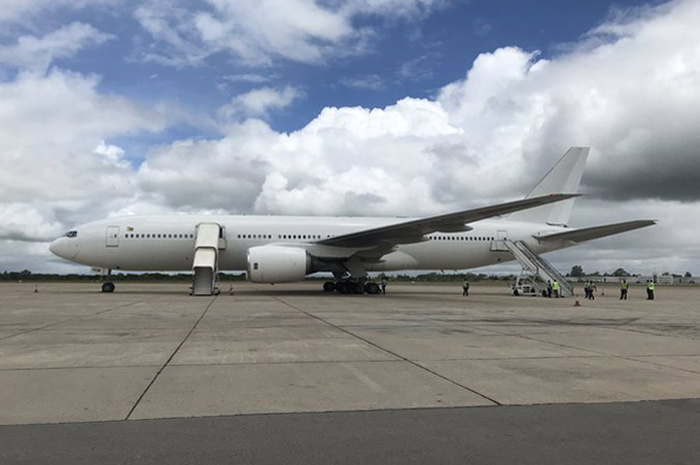
Air Zimbabwe stored its two B777-200ERs: Z-NBE (msn 28422 and Z-RGM (msn 28421) at delivery on their maintenance area at Harare International Airport and they are on the dry-lease market. Neither aircraft has ever been deployed into commercial service for the state-owned Zimbabwean carrier.




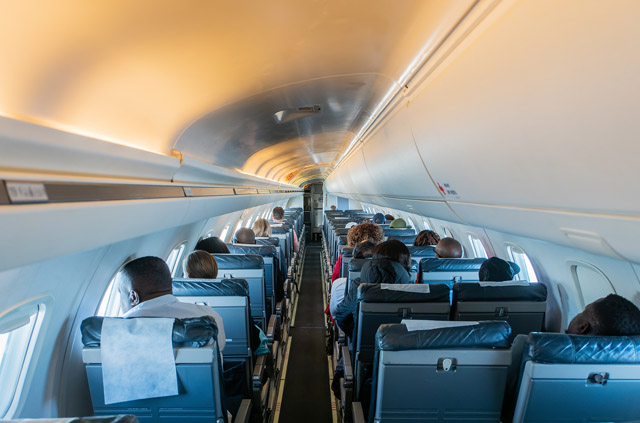
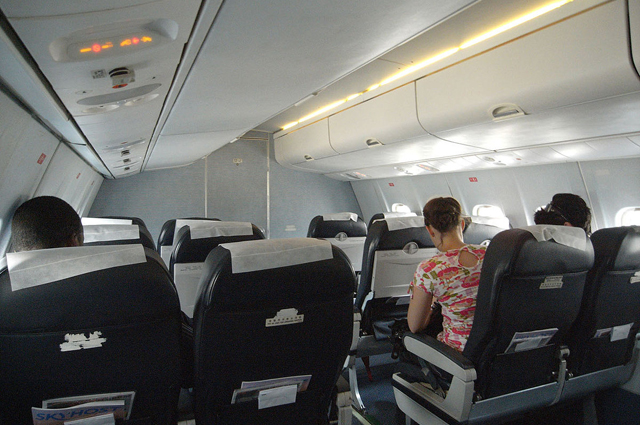
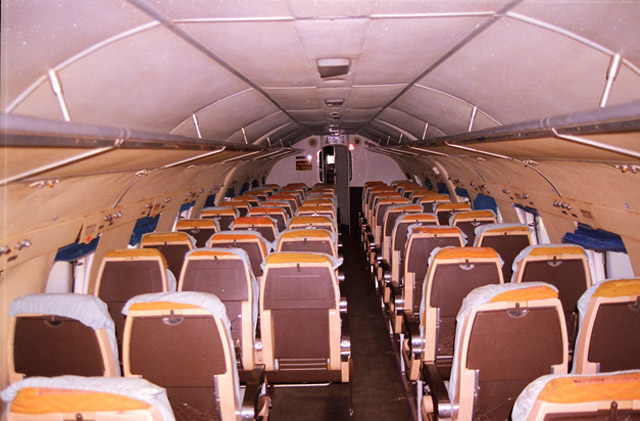


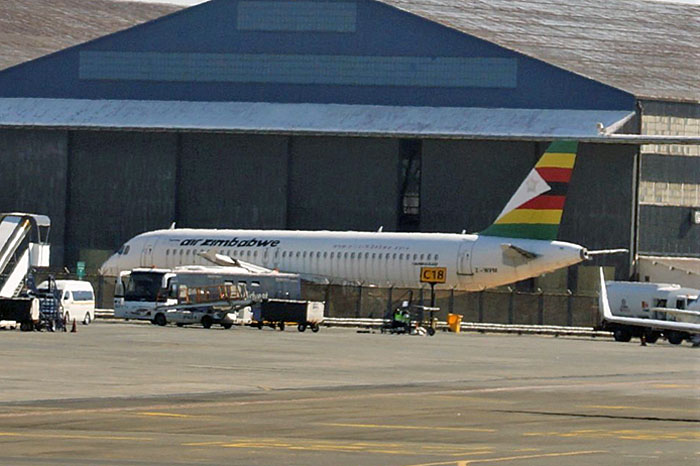
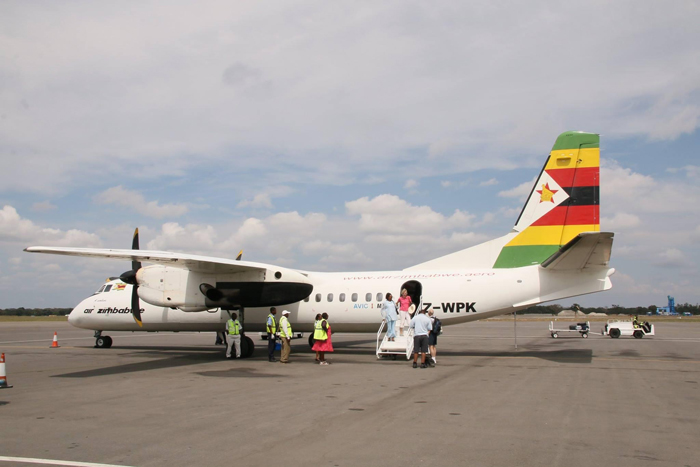
Is there any chance for Air Zimbabwe to solve the owner-problem of the Airbus A320-214 Z-WPM and the three MA-60 aircraft that are stranded behind the airport hangar in Harare regarding owner-problem and with lack of funds to make them serviceable again.
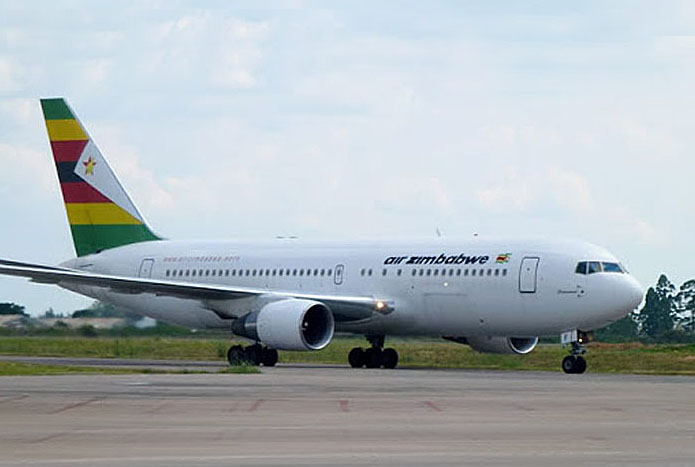
Air Zimbabwe
formally came into being on 1 September 1967, when the Government of Rhodesia created Air Rhodesia Corporation
to succeed Air Rhodesia, a wholly owned subsidiary of Central African Airways Corporation (CAAC) that had
existed since 1951 as a domestic airline within Rhodesia.

Central African Airways (CAA) was a supranational airline corporation serving as flag carrierfor Southern Rhodesia, Northern Rhodesia and Nyasaland (respectively the present day countries of Zimbabwe, Zambia and Malawi), which were organised as the Federation of Rhodesia and Nyasaland, also known as the Central African Federation, from 1953 to 1963. Based in Salisbury, it offered an extensive network of domestic passenger and cargo flights, as well as international services to major cities in Southern and Central Africa, and a route to London. In 1960, CAA owned 15 aircraft and had 1,155 employees.

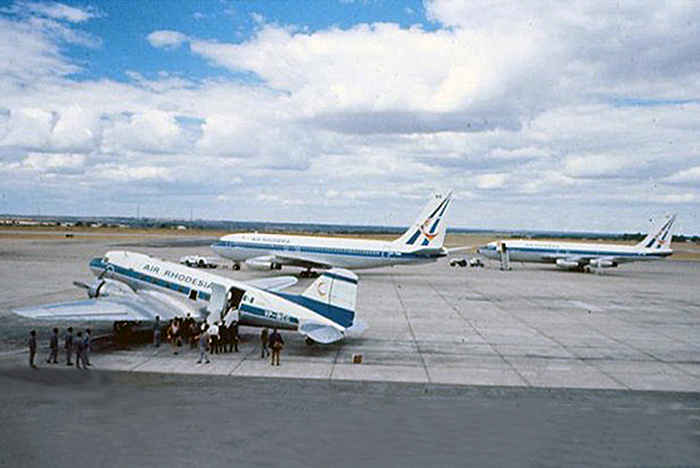
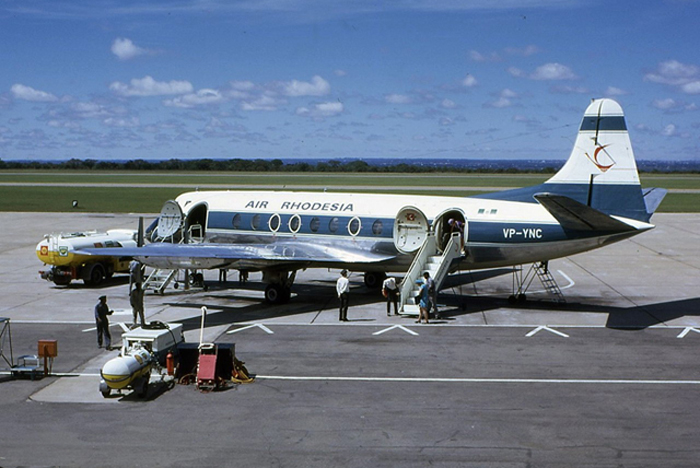
Air Rhodesia was the national airline of Rhodesia. Its head office was located on the property of Salisbury Airport Rhodesia.
The airline was formed as a subsidiary of Central African Airways (CAA) in June 1964, but became an independent corporation on 1 September 1967. It flew internal routes to Buffalo Range, Bulawayo, Fort Victoria, Kariba, and Victoria Falls. During the 1970s, it operated international flights to Johannesburg and Durban in South Africa; Beira, Vilanculos and Lourenço Marques in Mozambique; and Blantyre in Malawi.
Air Rhodesia's mainstay aircraft were Douglas DC-3, Dakotas, Vickers Viscount 700D turboprops and Boeing 720 jetliners, which were successfully purchased in April 1973 despite sanctions against the Rhodesian government. After the country was renamed, the airline became known as Air Zimbabwe Rhodesia in 1979, before reforming as Air Zimbabwe in 1980.
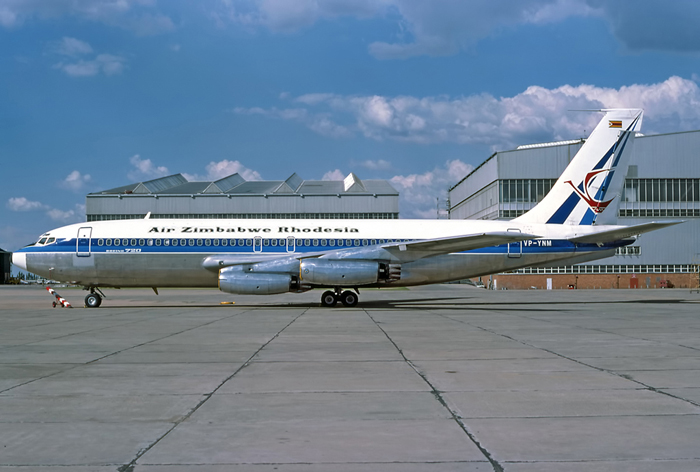
Air Zimbabwe was formed in April 1980 when the Republic of Zimbabwe was formed. Thoughts imediately turned to reopening routes to destinations long closed to the airline as a result of sanctions.
In the beginning, Air Zimbabwe operated Air Rhodesias/AirZimbabwe Rhodesia older fleet which was then grounded when the new carrier upgraded the fleet with new modern aircraft.
Services connecting Harare with South Africa (Durban and Johannesburg) had been operated before the country gained its independence. Scheduled services began on 2 April 1980 to London Gatwick with on the inheritated Boeing 720-025.
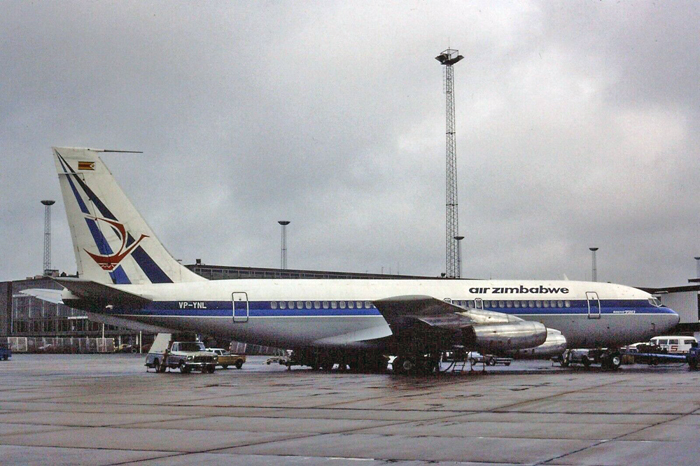 Boeing 720 VP-YNL at London/Gatwick Int airport. 1973
Boeing 720 VP-YNL at London/Gatwick Int airport. 1973
 Boeing 707-330B Z-WKS at London Heathrow Int airport 1982. UK
Boeing 707-330B Z-WKS at London Heathrow Int airport 1982. UK
The company leased a Boeing 707-330 from South African Airways until May 1981, when three Boeing 707 were bought from Lufthansa. That year, flights to Frankfurt were inaugurated. The airline recorded a ZWL 330,000 (£220,000) profit for the fiscal year that ended on 30 June 1980. The two (2) last Vickers Viscount 810-serie were purchased by DAN-Air, UK.
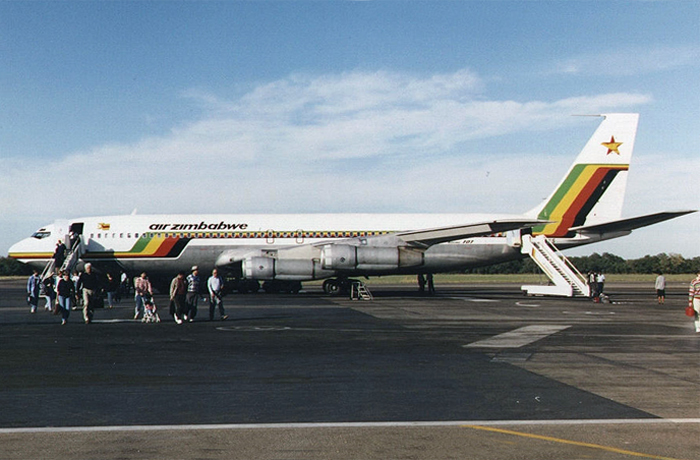 Boeing 707-330B Z-WKS Harare Int airport, Zimbabwe 1981.
Boeing 707-330B Z-WKS Harare Int airport, Zimbabwe 1981.
During 1982, a service to Perth and Sydney commenced; it was run in cooperation with Qantas and flown with Qantas Boeing 747SP aircraft. In May that year, the Government directed Air Zimbabwe and the national freighter airline Affretair to merge their operations. The freighter company was eventually taken over by Air Zimbabwe in July 1983. The cargo carrier continued its operations under the Affretair brand. During 1983, Air Zimbabwe became a member of the International Air Transport Association (IATA) It also extended its regional routes to Gaborone, Lilongwe, Lusaka and Nairobi.
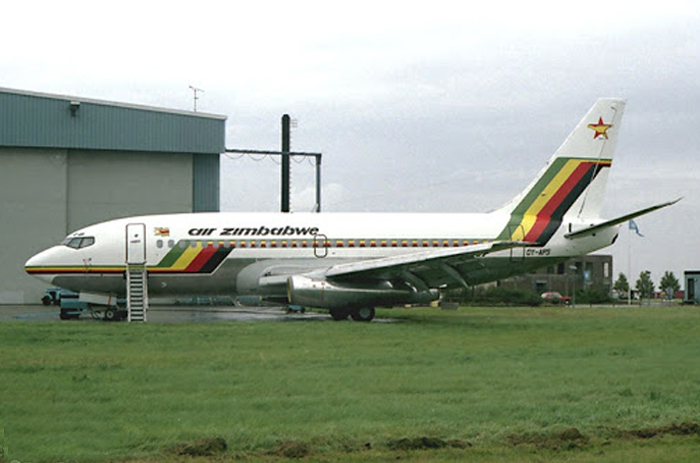
The airline decided in 1985 to renew the fleet and replace the ageing Boeing 720 aircraft by ordering three factory-new Boeing 737-200 and meanwhile waiting for the new aircraft to arrive, Air Zimbabwe leased a Boeing 737-200 Z-NIL (OY-APS) on a short-term contract from Maersk Air, Denmark
In 1986 and the first of three owned Boeing 737-200s Z-WKA was phased in and put into service in December that year. The leased Boeing 737-200 was returned to the lessor when the contract expired. The second Z-WKB and third aircraft Z-WKS of the type were delivered in June and July 1987. The additional capacity permitted route extensions to Dar es Salaam, Manzini, Maputo and Mauritius.

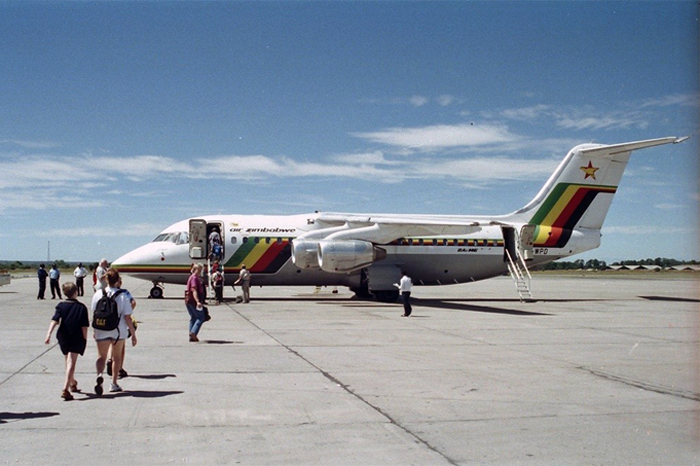
A BAe 146-200 was bought in 1987 for domestic routes. Also in 1987, the airline announced its intentions to acquire Ilyushin Il-62s and -86s and Yakovlev Yak-42s instead of Western-built aircraft. These plans never materialized and Air Zimbabwe placed an order for two Boeing 767-200s. With registration Z-WPE and named "Victoria Falls", the first Boeing 767-200ER entered the fleet in November 1989.
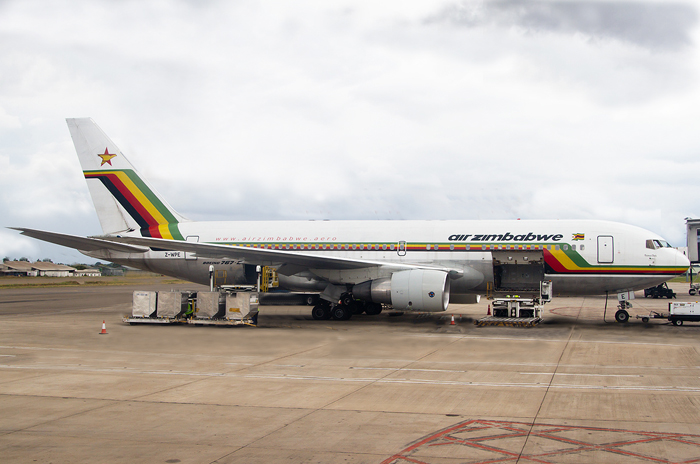
The Boeing 707 was retired from serving long-haul routes shortly afterwards These aircraft were still used to cover regional routes. The Viscount was definitely withdrawn from service in November 1989.
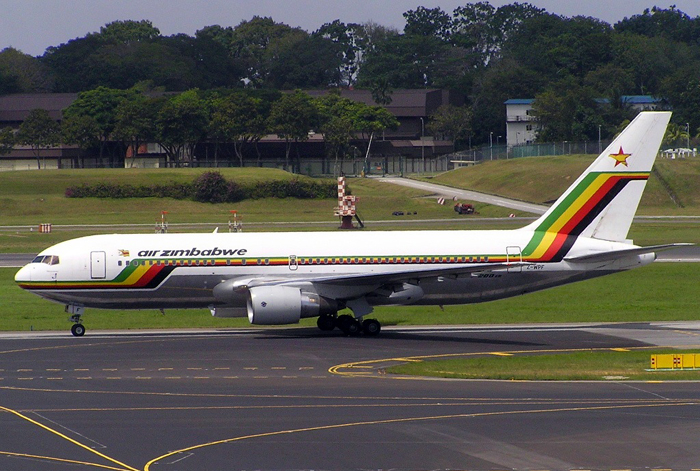
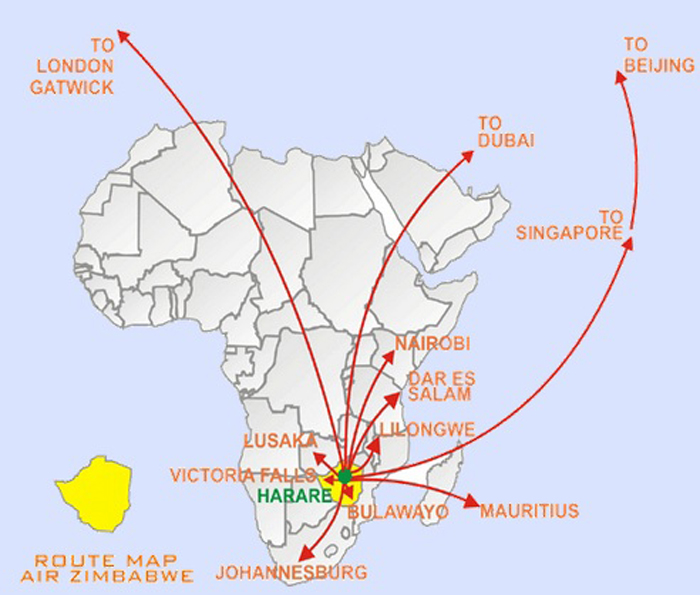
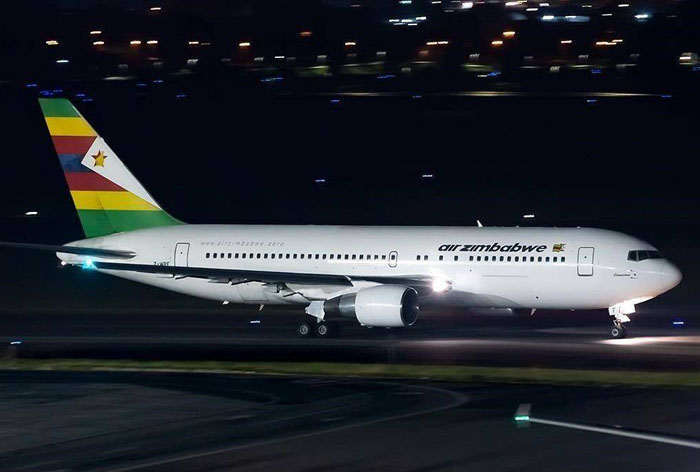
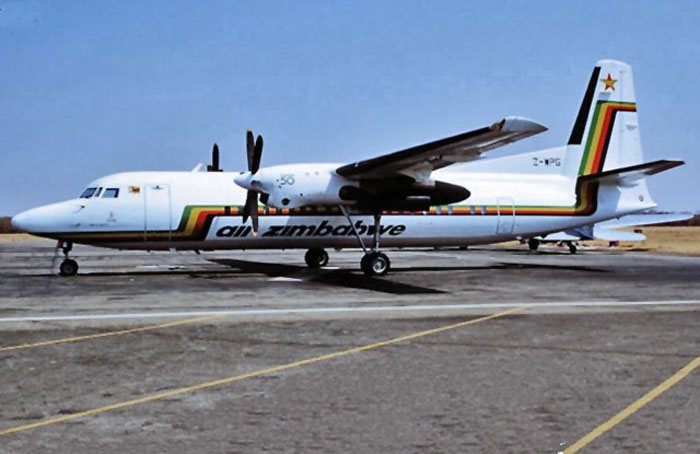
Two Fokker 50s, Z-WPG and Z-WPH were delivered in early 1995 on a 10-years intended lease, but unfortunately these aircraft were incapable of serving the "hot and high-destinations" with adequate payloads and were returned to the lessor.
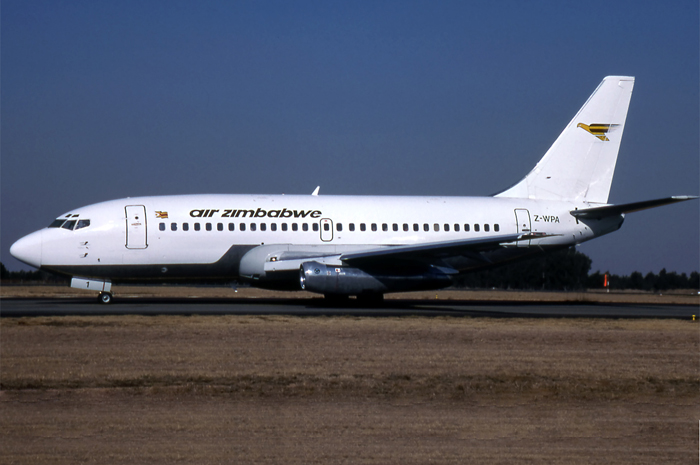 Boeing 737-200 Z-WPA returning from Uganda Airlines 1999 after it had been leased for five years.
Boeing 737-200 Z-WPA returning from Uganda Airlines 1999 after it had been leased for five years.
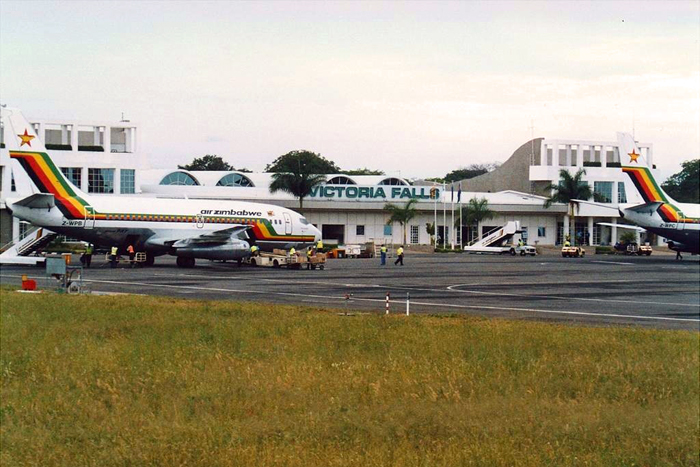
In February 2004, it was revealed that the company had been temporarily suspended by the IATA over unpaid debts.
Transportation China has been involved in all aspects of public transportation in Zimbabwe: road, rail and air. In 2004, Air Zimbabwe reached an agreement with the Chinese National Aero-Technology Import and Export Corporation for the acquisition of a long-haul plane (replacing one of their B767?).
At the same time Air Zimbabwe signed an agreement to buy two Xian MA-60 Air Zimbabwe has also benefitted from Chinese generosity through the gift of an MA60 aircraft that the airline has been using on local and regional routes. Apparently China made a ”buy two get one free deal
It was noted at the time that this was aimed at assisting tourism in Zimbabwe. Although there were initial reports of technical difficulties, these were largely unfounded.
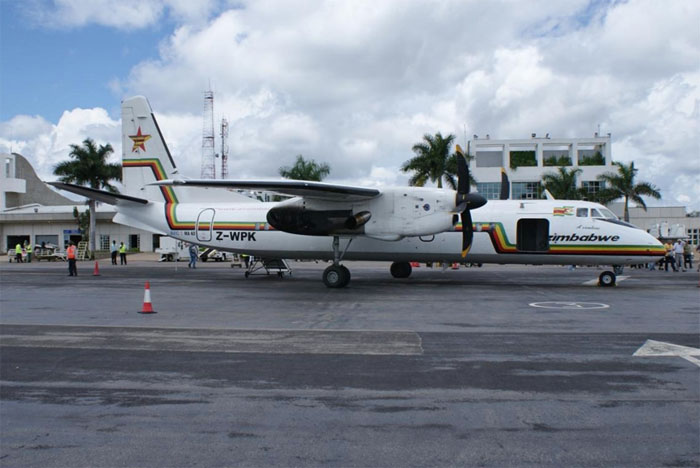
Air Zimbabwe, took delivery of two Chinese aircraft, Z-WPJ in August Z-WPK on 27th May, Z-WPJ on 24th August and Z-WPL on 23rd December.
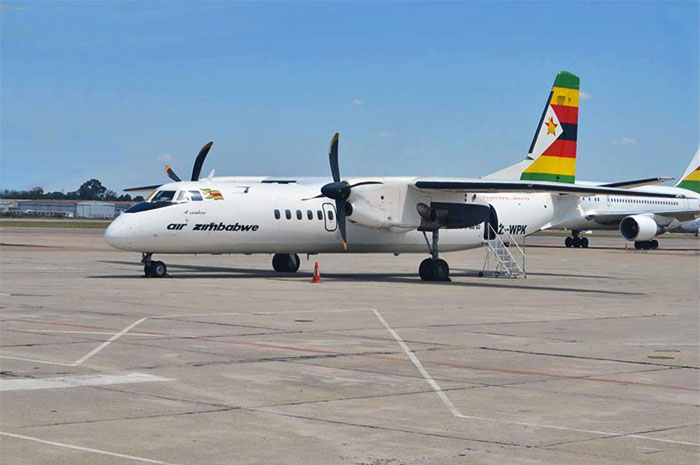
Xian MA60 Z-WPK msn 0303 at Harare Int. airport Zimbabwe 2015.
Photo:African Airliners archive
In October 2006, the prices of Air Zimbabwe tickets increased up to 500%, partly due
to the inflation in the country rising to over 1,000% at that time the Zimbabwean Central Bank stated that it could not continue supporting Air Zimbabwe and other money-losing state companies and partly because the airline was in need of foreign currency to pay for fuel, spare parts, and catering. A foreign exchange crisis in the country led to the cancellation of the carrier's operations in late 2005, following the lack of hard currency to pay for the fuel. In 2006, it was disclosed that passenger numbers had fallen from 1 million in 1999 to 23,000 in 2005.
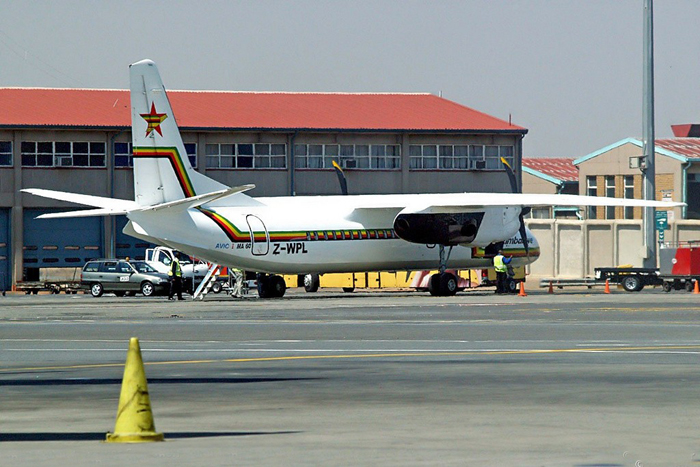
Due to lack of spareparts at the homebase, the Xian MA-60 Z-WPL was flewn to Johannesburg for service in September and returned for operations a month later.
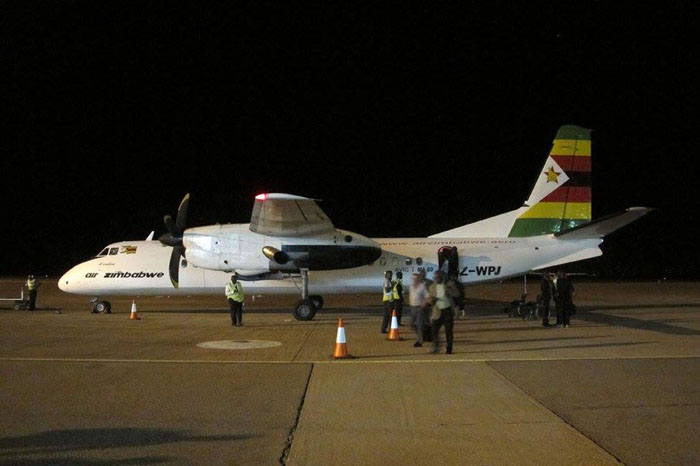 Xian MA60 2009
Xian MA60 2009
On 11th March 2009, Harare Int. airport. During the takeoff in night-conditions the Xian MA60 Z-WPJ hit warthogs the on runway and the left main gear collapsed. The plane skidded on runway and veered off. All passengers ceased but the aircraft got extensiv body-damage. The aircraft was extensiv damage to the aircraft. The plane was withdrawn from use (WFU)at Harare Int airport.
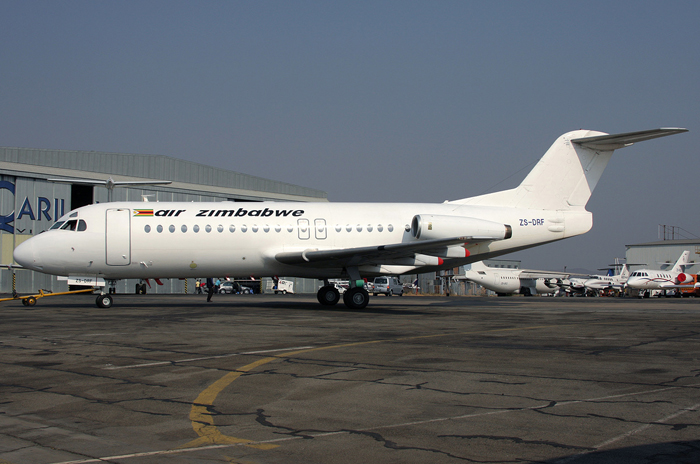
This is interesting a Fokker F28-4000 ZS-DRF in Air Zimbabwe titles that has been seen for some weeks in September 2010 at Lanseria (homebase) and at Jo-burg. It must have been a kind of atempt - a proposal, leased it to AirZim 2010 for awhile or what?
In February 2011, the airline had to cancel all flights to Johannesburg due to unpaid debts to creditors at the airport. Regional and domestic services were suspended for a short period in May, following both the grounding of its Boeing 737-200 fleet by the Civil Aviation Authority of Zimbabwe (CAAZ) over maintenance concerns.
 Boeing 767-200 Z-WKF was the only of the two B767s in this nice livery.
Photo:African Airliners archive
Boeing 767-200 Z-WKF was the only of the two B767s in this nice livery.
Photo:African Airliners archive
Operations resumed in late May 2011 but in late June 2011, Air Zimbabwe was forced to return the leased Boeing 737-500 from Zambezi Airlines as it was unable to afford the leasing costs. The plane was leased to compensate the lack of equipment following the grounding of its Boeing 737-200 fleet. The aircraft was mainly used to operate the Harare–Johannesburg route. It was disclosed the company had to fly the route using one of their Boeing 767s.
 Z-WPA is still flying!
Z-WPA is still flying!
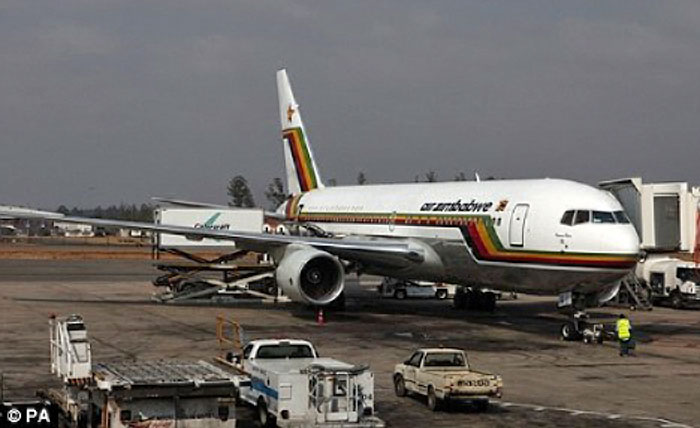
Informed sources told reporters that Air Zimbabwe’s long haul aircraft, a Boeing 767-200 known as Victoria Falls, was seized by American General Supplies upon landing at London’s Gatwick International Airport on Monday morning from Harare International Airport.
American General Suppliers secured a court injunction in the US that gave them the power to impound the aircraft over US$ 1, 2 million debts.
Photo:African Airliners Archive
In mid-June 2011, flights to London and South Africa were temporarily suspended because of a due debt with fuel suppliers. Owing both to the grounding of the 737-200 fleet and to fuel shortages in the country, domestic services were suspended and regional flights were operated on an irregular basis. The airline started regularizing medium- and short-haul operations in July, as it got clearance from the CAAZ to op-
erate one of its three grounded 737-200, the Z-WPA.
Operations were discontinued again in late July 2011, this time due to a pilots' strike, resuming in mid-September after a 50-day-long strike. Once again, overseas and domestic flights were temporarily stopped in early November 2011, this time owing to an unpaid debt with fuel providers Overseas routes resumed on 11 November. However, flights to the United Kingdom and South Africa were suspended in January 2012 over likely impoundments of the airline's aircraft for outstanding debts.
In May 2011, the airline was suspended from IATA's international financial and booking system over unpaid booking fees. It was announced in early November 2011 that the government would absorb a US$140 million debt in order to make the company more attractive to foreign investors. Already in December 2011, the carrier struggled to provide its regional and overseas services amid aircraft impoundments over unpaid debts.
Despite versions for the acquisition of new aircraft were officially declined in July 2011 owing to a precarious cash position. It was disclosed that the airline bought an Airbus A340-500 and an Airbus A320, both new, in August 2011. As of January 2012, there had been discrepant versions over the acquisition of the new Airbus aircraft, since the secretary of the Zimbabwean Ministry of Transport has denied the transaction.
In January 2012, the airline came under judicial management. Following a failed revival attempt, in which the pilots refused to resume domestic services over US$35 million in unpaid salaries and allowances, it was announced on 24 February 2012 that Air Zimbabwe would be grounded indefinitely. The Xian MA60 Z-WPL aircraft that had been flewn to Johannesburg in July 2006 has returned to Harare for storage and is presumed for sale
In March of the same year, the government of Zimbabwe established Air Zimbabwe Private Limited as the new owner of the carrier after disbanding the airline's former parastatal owner Air Zimbabwe Holdings and absorbing a US$150 million debt. The airline resumed flying on a continuous basis in early May 2012, yet using a singel Boeing 737-200 aircraft and serving only three domestic destinations: Bulawayo, Harare and Victoria Falls and only for a short period of time until the grounding of the aircraft on 2 July 2012.
The airline was reactivated in late November 2012, with a reduced flight scheme serving the Harare–Johannesburg route. Reports indicated the carrier resumed domestic operations connecting Bulawayo, Harare and Victoria Falls, as well as the regional route to Johannesburg, on a daily basis service with the aged Boeing 737-200.
Air Zimbabwe was under pressure to renew and expand its fleet in the face of growing competition. The airline had to lease aircraft on short term grounds to service some of its routes from time to time. To boost the airline´s only Boeing 737-200 that had resumed operation last July 2012, the government was forced to find a lessor which had an aircraft suitable for Air Zimbabwe.
Air Zimbabwe was at this time offered to dry lease two Airbuses A320-214 to a cost of US$ 200.000 each from the aviation broker China Sonangol International (the same company that had caused problem for AirTanzania) with disputed leasing contract of an Airbus A320) through Isle of Man brokers SouthJet. This contract was probably not sanctioned by government, but only signed by the airline's representatives.

The Airbus A320 Z-WPM ( msn 630) (the former Air Tanzania 5H-MWH) and the second Airbus A320 Z-WPN (msn 1973) were part of a 2012 deal between China Sonangol International (Hong Kong Int'l) and the then Mugabe regime to help revive the debt-ridden state-owned airline. The deal was structured via a pair of IOM-based SPVs, SouthJet. The first dry leased Airbus A320-214 Z-WPM entered immediately the important service to Johannesburg, Bulawayo and Victoria Falls routes.

The second Airbus A320-214 Z-WPN was operating only a short time for Air Zimbabwe but due to a heavy landing at O.R Tambo International Johannesburg the landing gear was damaged. After a thorough investigation, it was found that the aircraft had several serious technical defects in the aircraft frame in addition to the damaged landing gear but sources in the aviation industry said that Air Zimbabwe took the plane to SAA because it did not have technicians trained to service the Airbus.
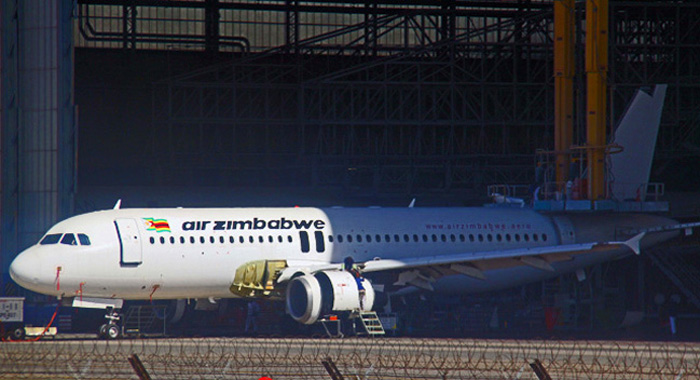 The Airbus A320-214 Z-WPN at the workshop for undergoing investigation of the landing-gear.
The Airbus A320-214 Z-WPN at the workshop for undergoing investigation of the landing-gear.